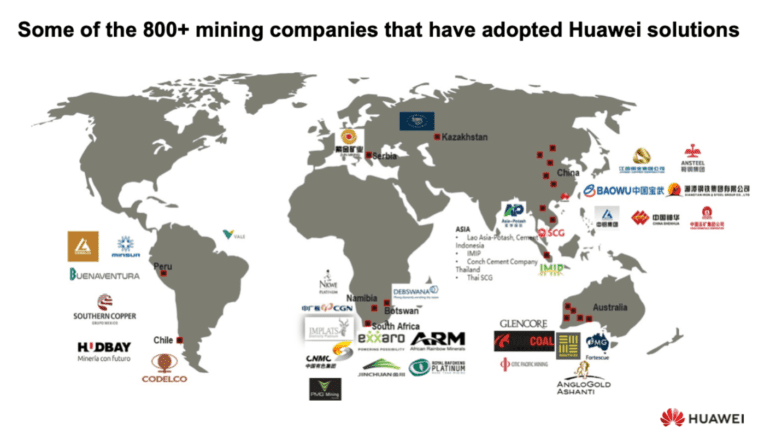- The mining industry embraces AI integration for enhanced safety and efficiency.
- Huawei leads the charge with its AI-based Pangu Mining suite, addressing safety concerns and improving operational efficiency.
- The deployment of 5.5G networks promises greater connectivity, automation, and intelligence in mining operations.
- Remote monitoring and digital solutions become pivotal in transforming traditional mining practices.
- Huawei’s Harmony operative system facilitates seamless communication and collaboration across mining operations.
- AI empowers mining companies to become insight-driven enterprises, leveraging data for faster decision-making and improved safety measures.
Main AI News:
A year following the introduction of Chat GPT and its competitors, including Google Bard and Microsoft Copilot, the global discourse on the integration of artificial intelligence (AI) into everyday life persists.
While experts deliberate over the potential implications of AI adoption on personal and business fronts, the mining sector is not idly awaiting conclusions. Instead, it is actively engaged in a journey to revolutionize operations from traditional heavy-equipment and on-site labor models to mines that seamlessly integrate connectivity, automation, and AI.
During a recent visit to MWC Barcelona, an annual trade show spotlighting the mobile communications industry, MINING.COM witnessed firsthand the increasing convergence of telecommunications and mining. Hosted by telecommunications giant Huawei, MINING.COM, as the inaugural mining media attendee at MWC, observed the readiness of sensors, smart cameras, and 5G relay boxes for deployment across global mines.
The spotlight was on the emerging generation of mobile internet, dubbed “5.5G” or “5G Advanced.” This new standard promises to imbue networks with greater “intelligence” through AI and machine learning applications, while simultaneously enhancing performance and reducing overall power consumption.
When queried about Huawei’s foray into mining solutions, Jack Chan, the company’s Vice President of Global Marketing and Solutions for mining and oil and gas, underscored safety as the primary motivation. With nearly 3 million coal miners toiling in 4,400 underground coal mines in China, safety concerns loom large. Chan emphasized that transitioning workers from perilous tunnels to control rooms equipped with real-time data displays not only saves lives but also appeals to younger generations.
Chan stressed the indispensability of Information and Communications Technology (ICT) infrastructure in supporting intelligent mining. Without swift and reliable communication networks, robust computing capabilities, rapid data storage, and vigilant network security, essential tasks like real-time monitoring and instant data exchange would be untenable.
In this era of intelligence, roles such as AI service architects and AI algorithm engineers are poised to take center stage, according to Chan.
While remote and digital solutions are commonplace in coal operations elsewhere, China has lagged behind. However, the government has set a target of achieving basic digitalization across all mines by 2035. Huawei has surged ahead with its AI-based Pangu Mining suite, launched in July last year, drawing inspiration from ancient Chinese mythology associated with the creation of the world.
Pangu Mining comprises 21 application scenarios spanning nine operational activities, including coal mining, tunneling, safety monitoring, and more. Notably, Huawei’s AI model has addressed the vexing issue of rock bursts in mining, reducing review workloads by 82% and slashing inspection time from three days to a mere 10 minutes.
Codelco, the world’s largest copper miner based in Chile, has embraced Huawei’s solutions to revitalize underperforming mines and projects amid dwindling copper output.
At its core, Huawei, a telecommunications company, has leveraged its expertise to deliver connectivity solutions and an operative system named Harmony. Harmony fosters interoperability among different devices, facilitating seamless communication and collaboration across mining operations.
Jason Liu, President of Learning & Certification Services at Huawei, emphasized the symbiosis of AI technology, industry cognition, and enterprise data in accelerating digital intelligence transformation. He underscored that AI solutions should complement, not supplant, human intelligence.
Indeed, AI empowers mining companies to evolve into insight-driven enterprises, leveraging data for faster decision-making, enhanced safety, improved efficiency, and reduced operational footprints. For mining firms, digital thinking isn’t just a tool but a foundational value driving business innovation and adaptability, a sentiment championed by Huawei.
Conclusion:
The integration of 5.5G networks and AI technologies marks a significant paradigm shift in the mining industry. Companies like Huawei are pioneering intelligent solutions that enhance safety, efficiency, and productivity in mining operations. The adoption of these technologies underscores the industry’s commitment to embracing digital transformation and innovation to meet evolving market demands and regulatory standards. As mining companies continue to leverage AI and connectivity solutions, we can expect to see accelerated growth, improved operational outcomes, and heightened competitiveness in the global mining market.

